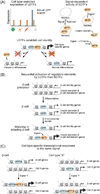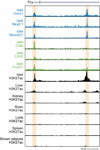Transcriptional mechanisms of pancreatic β-cell maturation and functional adaptation
- PMID: 34030925
- PMCID: PMC8259463
- DOI: 10.1016/j.tem.2021.04.011
Transcriptional mechanisms of pancreatic β-cell maturation and functional adaptation
Abstract
Pancreatic β-cells secrete insulin commensurate to circulating nutrient levels to maintain normoglycemia. The ability of β-cells to couple insulin secretion to nutrient stimuli is acquired during a postnatal maturation process. In mature β-cells the insulin secretory response adapts to changes in nutrient state. Both β-cell maturation and functional adaptation rely on the interplay between extracellular cues and cell type-specific transcriptional programs. Here we review emerging evidence that developmental and homeostatic regulation of β-cell function involves collaboration between lineage-determining and signal-dependent transcription factors (LDTFs and SDTFs, respectively). A deeper understanding of β-cell SDTFs and their cognate signals would delineate mechanisms of β-cell maturation and functional adaptation, which has direct implications for diabetes therapies and for generating mature β-cells from stem cells.
Keywords: adaptation; insulin secretion; maturation; metabolism; transcription factors; β-cell.
Copyright © 2021 Elsevier Ltd. All rights reserved.
Figures




References
Publication types
MeSH terms
Substances
Grants and funding
LinkOut - more resources
Full Text Sources
Other Literature Sources

